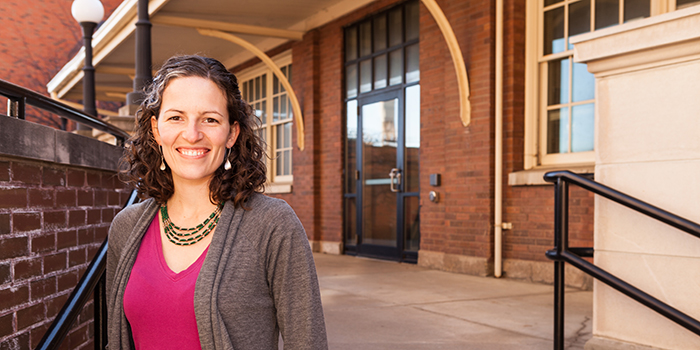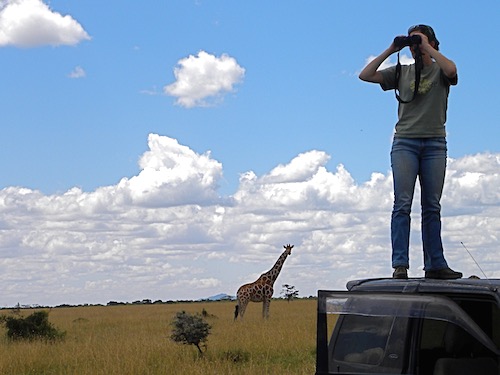Kimberly VanderWaal, currently a research associate in the Department of Veterinary Population Medicine, began working in a CBS lab while still in high school.


Hooked on Africa
Eager to get started as a scientist, VanderWaal heard of an opportunity to work on African lion projects in Craig Packer’s lab. “I thought, well, it’s not wolves, but it’s a large, social, carnivorous mammal, so I’ll give it a try,” she says. She began working in the lab while still a senior in high school, and remained there for five years. “I started with low-level data-entry work, but then took on more independent research projects, and eventually did my honors thesis in that group.” While still an undergraduate, she traveled to Tanzania to participate in two lion projects. “After that visit, I knew I wanted to work with African wildlife,” she says.
Spot on
VanderWaal received her doctorate in behavioral ecology from the University of California – Davis in 2013. Her Ph.D. project was on how social networks impact the pattern of pathogen transmission in wildlife populations. “I had originally planned to use impalas for my study, but there are so many of them, and they’re identical,” she says. Realizing that giraffes each have a unique spot pattern, and that there are relatively few of them, she switched the animals in the study. “There were about 200 giraffes in the area where I was working, and I was eventually able to recognize every one of them by their spots, their gait, the way they hold their necks — just the way you recognize your friends,” she says.
The CBS research advantage
Reflecting back on her undergraduate days and her current position, VanderWaal says she especially appreciates having been able to participate in research and lab work from the beginning of her career. “At CBS, there are many opportunities to engage in research, which helps students apply the science they’re learning about in class,” she says. “Being in a lab gives you a chance to see how science is conducted, and having that hands-on experience is always a plus, no matter what you plan to do after graduation.”
Asked for advice to those just starting out on a science career at the university, VanderWaal says: “Opportunities come to those who seek them out. Professors are often very willing to help students find research opportunities, but that can only happen if you actually talk to them.” – Julie Kendrick